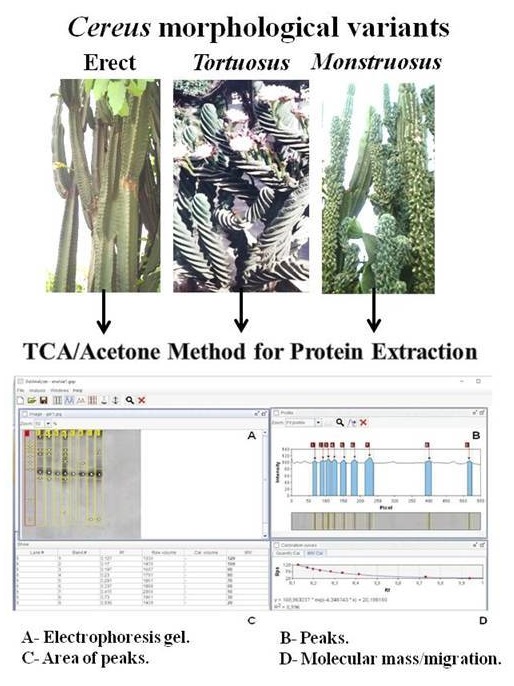Extraction of total protein from shoots of Cereus morphological variants (Cactaceae) for proteomic analysis: Extraction of protein for proteomic analysis

Published 2020-01-15
Keywords
- cactus,
- phenotypic variants,
- protein extraction,
- SDS-PAGE,
- succulent tissues
How to Cite
Abstract
Since there is a hypothesis that qualitative and/or quantitative differences of specific proteins may be associated with morphological variants in cacti of the Cereus genus (phenotypes erect, tortuosus and monstruosus), in current study we tested three different methods for protein extraction from shoots of the phenotypic variants to obtain protein fractions for further proteomic analysis. The TCA/acetone method for protein extraction revealed a larger number of well-defined bands in SDS-PAGE system than the methods with phenol. The quantification of protein extracted by TCA/acetone ranged between 0.488 (tortuosus) and 2.92 µg·mL-1 (monstruosus). Although the use of phenol is the most appropriate procedure for protein extraction from recalcitrant tissues, results have shown that extraction buffer containing two antioxidant agents (EDTA and β-mercaptoethanol) and PMSF to prevent protein degradation was efficient to avoid proteolysis and lower protein yield, than using TCA/acetone precipitation for protein extraction from shoots of Cereus sp. The use of extraction buffer with appropriate combinations of antioxidant agents, phenol-complexing agents, and protease inhibitors may be an efficient alternative for proteins extraction from succulent and recalcitrant tissues (such as cactus plants) using a simple protein extraction method.





